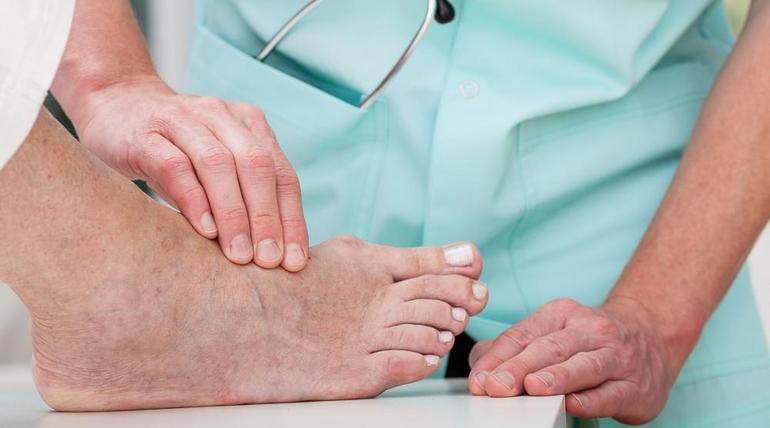The Centers for Advanced Orthopaedics is redefining the way musculoskeletal care is delivered across the region with locations throughout Maryland, DC, Virginia and Pennsylvania.
What to Expect Before & After Minimally Invasive Bunion Surgery

Minimally invasive bunion surgery offers patients less pain and faster recovery than other bunion procedures. But many patients still have questions about the procedure. In this article, we are going to explain what you can expect before and after a minimally invasive bunion procedure.
Before Minimally Invasive Bunion Surgery
Here is what to expect pre-op as you prepare for minimally invasive bunion surgery:
- No eating or drinking after midnight before the surgery
- Anesthesia will place an IV and give you relaxing medication
- Once comfortable, you will get a nerve block to make your foot numb
Right After the Procedure
Immediately following the procedure, a special orthopedic shoe will be placed on your foot and when you are comfortable, you can go home with your chosen companion. You can place weight on the foot BUT, the foot will swell more if it is down; better to keep it elevated above your heart as much as possible. The bandage and orthopedic shoe should remain on until seen in the office. Crutches, walker or a wheelchair can be used, but MOST patients will not need them
Postoperative Course
- After surgery weeks 1-2: 1st follow-up in the office. Dressings will be changed, X-rays taken. You may begin to get the incisions wet in a shower (no soaking in a tub until sutures dissolve). You should begin gentle range of motion exercises of the big toe to prevent stiffness (see below). You can start to drive in the special orthopedic shoe ONLY if you are able to control the car in an emergency. Can you stamp your foot on the brake? You should not take pain medication and drive! A toe spacer or strapping should be used most of the time. You may need some pain medication after the nerve block wears off. The orthopedic shoe or boot may be removed at night
- Weeks 3-6: 2nd follow-up in the office. May see the physician assistant. X-rays taken. You may begin using a stationary bike, walk for exercise, elliptical trainer or rowing machine but should remain in the orthopedic shoe OR a supportive shoe with added carbon-fiber insert for stability. A toe spacer or strapping/taping should be used most of the time. Continue to work on “range of motion” of the big toe (see below). May start physical therapy if stiff. You may take a bath if the incision is healed. Should not need pain medications
- Weeks 6-7: 3rd follow-up in the office. May go into your own supportive shoes (if comfortable) and increase your activities. Continue working on big toe range of motion (see below). Can stop using the toe spacer or strapping/taping. Expect the foot to swell with activities
- Month 3: 4th follow-up in the office. May start running, wearing heels
Swelling in the foot is the last issue to resolve. This may take many months or even up to a year to go away completely. Everyone heals at different rates so this general time-line may be changed and individualized. There are always risks with any surgery: infection, wound healing problems, scarring, swelling…these things, though very rare in minimally invasive surgery may occur and affect your post-operative course and outcome.